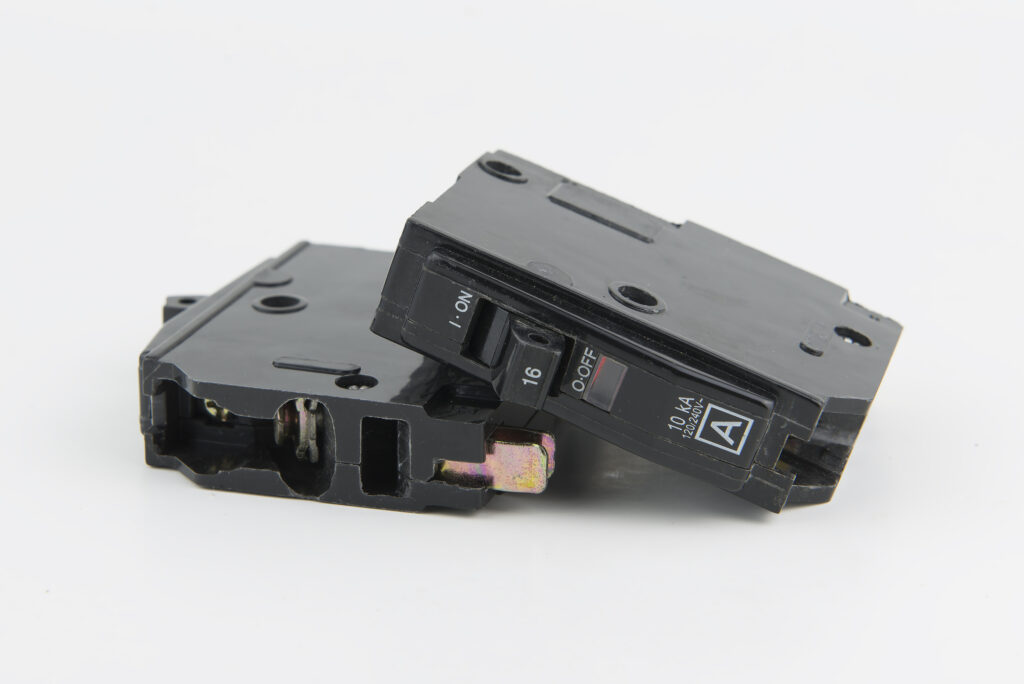Few things kill the vibe faster than losing power right in the middle of a cozy night in. A tripped breaker may seem harmless, but it’s your home’s first line of defense against serious electrical problems. The good news? Once you understand what’s causing it, you can keep your lights shining bright. Let’s dive into why your circuit breaker keeps tripping and how to get your home back in good electrical health.
How Circuit Breakers Work: A Quick Primer
Think of your breaker as a safety gatekeeper for your electrical system. Electricity flows through your home via circuits, with each one carrying a certain amount of power to outlets, lights, and appliances. When too much electricity flows through a circuit, it heats up the wires and could cause a fire. The circuit breaker “trips,” or shuts off the power, to stop that from happening.
Inside the breaker panel, each switch connects to a specific circuit. When you plug in too many devices or there’s a fault in the wiring, the breaker detects the excess current and snaps off automatically. It’s basically your home’s built-in firefighter, preventing sparks and overheating before things get out of control.
Once it’s tripped, you can usually reset it by flipping it all the way off and then back on. But if it keeps happening, that’s a clue that something deeper is going on.
The 5 Most Common Reasons Your Breaker Keeps Tripping
Repeated breaker trips aren’t random. They’re your electrical system waving a red flag. Below are the five main culprits behind those sudden power interruptions and what they mean for your home.
Circuit Overload
This is by far the most common reason for breaker trips. A circuit overload happens when too many devices pull power from the same circuit at once. Imagine your coffee maker, toaster, and microwave are all competing for electricity. The breaker can’t handle it and shuts things down before the wires get too hot.
To avoid this, spread out high-energy appliances across different outlets or circuits. Plugging everything into one power strip is asking for trouble. If overloads keep happening even after you’ve lightened the load, you may need an electrician to install additional circuits or upgrade your service panel to handle your household’s needs.
Short Circuit
A short circuit occurs when a live wire touches a neutral or ground wire, creating a low-resistance path that sends a huge surge of current through the system. It’s the electrical equivalent of a lightning bolt inside your walls — fast, hot, and dangerous.
You might notice a popping sound, a bit of smoke, or a burnt plastic smell when a short occurs. The breaker immediately cuts power to prevent fires or further damage. Common causes include damaged cords, loose connections, or old wiring insulation that’s worn down.
If you suspect a short circuit, don’t try to fix it yourself. Call a licensed electrician to trace and repair the problem safely.
Ground Fault
Ground faults occur when a live wire touches a grounded surface, like a metal outlet box or appliance casing. This sends electricity directly to the ground, bypassing the normal path and tripping the breaker almost instantly.
Ground faults are especially common in areas with moisture, like bathrooms, kitchens, and outdoor outlets. That’s why Ground Fault Circuit Interrupter (GFCI) outlets are required by code in these locations. They detect irregular current flow and shut down the power before anyone gets shocked.
If you’re dealing with repeated ground fault trips, there’s likely water infiltration, damaged wiring, or a failing appliance in the mix.
Arc Fault or Arcing
Ever hear a faint crackling or buzzing sound from an outlet or switch? That’s called arcing, and it occurs when electricity jumps through the air from one conductor to another. Arc faults can happen when wires are damaged, frayed, or loose, creating tiny “lightning arcs” that not only trip breakers but can also ignite fires if ignored.
Modern homes often use Arc Fault Circuit Interrupter (AFCI) breakers, designed to detect this kind of dangerous sparking and shut off the circuit instantly. If you have an older panel and notice frequent tripping along with those telltale noises, it’s time to have your wiring inspected and possibly upgraded.
Faulty & Worn-Out Breaker
Sometimes, the breaker itself is the problem. Like anything else in your home, breakers wear out over time. Continuous use, frequent tripping, or age-related corrosion can make them overly sensitive, or worse, unable to trip when needed.
If your breaker seems to trip randomly, even when the load isn’t high, it may be faulty. An electrician can test it and replace it if necessary. Upgrading your electrical panel to modern, more reliable breakers can make your home safer and reduce nuisance trips.
Step-by-Step Diagnostic Checklist
You don’t have to be an electrician to perform a little sleuthing when your breaker keeps tripping. The goal here isn’t to fix the problem yourself, but to identify possible causes before you make the call. Here’s a handy step-by-step checklist to help you narrow things down:
- Pinpoint Which Circuit Is Tripping: Start by checking your electrical panel. The tripped breaker will usually sit between “on” and “off.” Note which area or devices lose power when it trips, as this helps you identify which circuit might be overloaded or faulty.
- Unplug Everything on That Circuit: Once you’ve identified the circuit, unplug all connected devices and appliances. Sometimes a single malfunctioning device is the culprit. This step clears the load so you can safely reset the breaker without added stress on the system.
- Reset the Breaker Properly: Flip the tripped breaker fully to the “off” position and wait about a minute before switching it back on. If you skip this step and just jiggle it, the breaker won’t reset correctly, and it might seem like it’s still tripping for no reason.
- Test Each Appliance One by One: Plug each device back in individually while monitoring the breaker. If it trips again after reconnecting a specific appliance, that device is likely drawing too much power or has an internal fault. Unplug it and have it checked by a professional.
- Inspect for Visible Damage: Look for any signs of burning, melted insulation, frayed cords, or blackened outlets. These are clear indicators of shorts or overheating. If you notice any, stop using the affected circuit immediately and call an electrician.
- Check for Moisture or Outdoor Exposure: Outdoor outlets, basements, and bathrooms are prime spots for ground faults. Look for dampness near outlets or breaker panels. If water damage or condensation is present, this needs urgent professional attention.
- Evaluate How Much You’re Plugging In: If you frequently use space heaters, hair dryers, gaming consoles, or other energy-hungry gadgets on one outlet, you might simply be overloading the circuit. Consider spreading devices across multiple circuits or asking an A1 electrician about adding more dedicated circuits.
- Consider the Age of Your Electrical System: Homes older than 25 years often have panels designed for far fewer devices than we use today. If your home’s panel looks outdated or uses fuses instead of breakers, upgrading to a modern service panel can prevent constant tripping and improve safety.
- Keep a Log of Trips: Note the time, affected area, and what was running when the breaker tripped. This helps your electrician spot patterns and pinpoint the problem faster during service calls.
If at any point you smell burning, see sparks, or the breaker refuses to reset, don’t push your luck. Turn off the main breaker and call a professional right away.
When to Call an Electrician: Red Flags You Shouldn’t Ignore
A single breaker trip now and then isn’t the end of the world, but repeated trips can point to deeper electrical issues. The big red flags to watch for include:
- Burning smells near outlets or panels
- Visible scorch marks or melting
- Frequent breaker resets (multiple times per week)
- Lights flickering or dimming when appliances run
- Outlets that feel warm or buzz when in use
If any of these sound familiar, it’s time to get help. Persistent breaker issues might mean your wiring is overheating or your panel can’t handle your home’s power demands. Ignoring these warnings could lead to costly damage or, worse, an electrical fire.
A licensed electrician can test circuits, inspect connections, and replace any worn or damaged components. They can also evaluate whether your home would benefit from an electrical panel upgrade or dedicated circuits for high-demand areas like the kitchen or home office.
Call Our Licensed Electricians Before a Small Trip Becomes a Big Problem
You might think a tripped breaker is nothing more than a momentary inconvenience, but it’s really your home’s electrical system waving a caution flag. Repeated trips can signal issues like faulty wiring, moisture intrusion, or a panel that’s simply too old to keep up with modern living. The longer you ignore those clues, the greater the chance that small sparks turn into big problems.
At A1 Plus Electrical, Plumbing and Air, our licensed electricians in Houston specialize in diagnosing and resolving stubborn electrical issues before they spiral into emergencies. We believe in doing things right the first time. That means clear communication, upfront pricing, and long-term solutions that keep your home running smoothly. Our team shows up on time, ready to troubleshoot, repair, and modernize your electrical setup so you can plug in your life without the fear of constant breaker drama.

